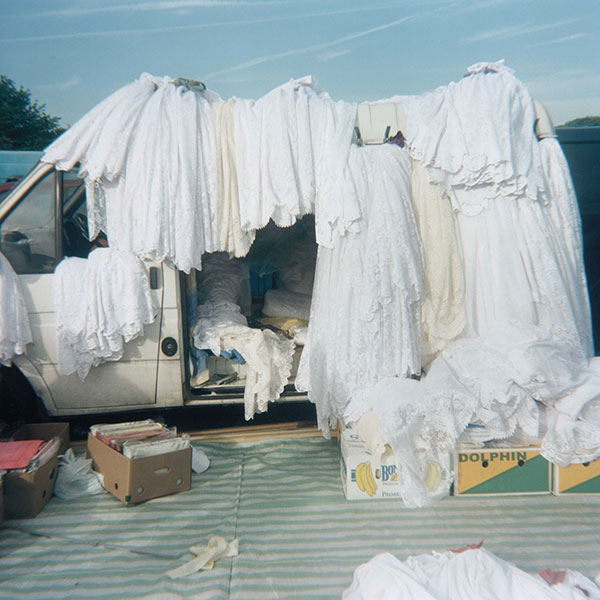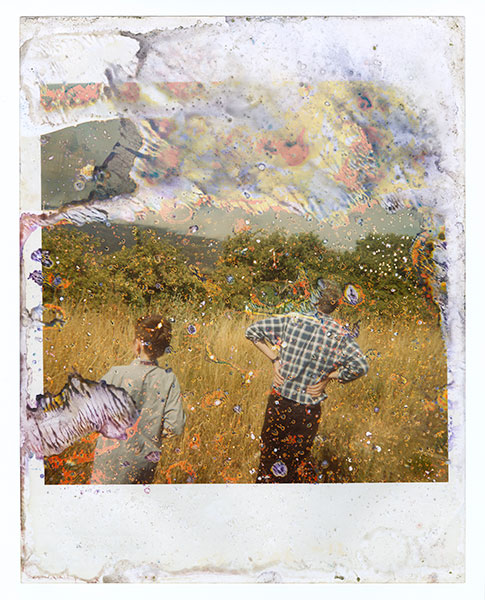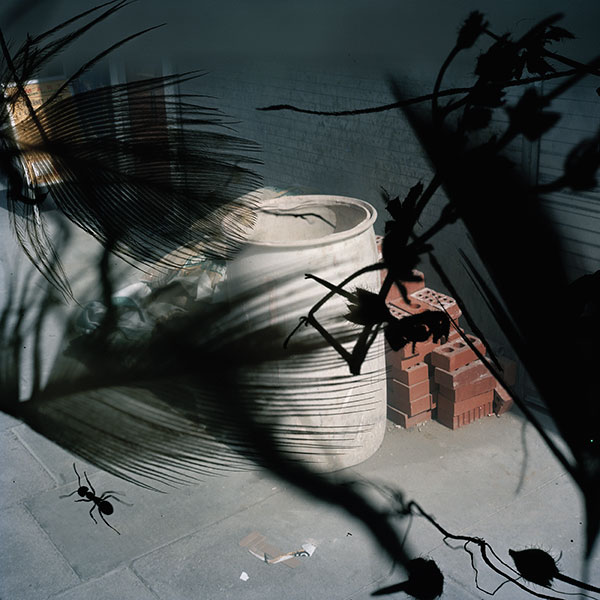In this talk to at the Architectural Association, Gill gives insight into his practice spanning a number of projects. My particular interest in this is the manner in which he uses visual means to explore place, and specifically areas of east London. In Hackney Wick, 2005, for instance, Gill uses a toy camera purchased at Hackney Wick market to make images of the area.

To form an even closer link to the place itself, in Buried, 2006, and Hackney Flowers, 2007, he buries prints in the ground, leading to a degradation of the image caused by chemical interaction between the surface of the print and the soil (in a manner similar to Matthew Brandt’s soaking of prints in lake and river water; in Co-existence, 2010, Gill also immerses prints in water from the pond that is the focus for the series, and photographs local residents through pond water).

I am exploring similar interactions between contaminated soil and chemical prints, as well as forms of digitally altering and degrading images. In Talking to Ants, 2014, Gill introduces environmental material into the body of camera, producing a combination of photogram and photograph, and introducing further chance and place related elements into the work.

The productions of artist books, which he self-publishes, has become a core element of Gill’s practice. He is clear, however, that it is the project itself that takes priority, stating that:
‘I try to keep the picture taking stage and the book-making very, very separate. And for me it’s so dangerous, even when I’m photographing to think of a book or that series in book form. I think it’s only at the very end that I would decide. I think that is quite important for me to mention because I do make books and it’s dangerous I think if the book itself starts to steer the picture making stage so I only start editing for books when I have completely exhausted the subject or its definitely come to an end and then I tend, it’s a fine line because I try not to rush the book making process but at the same time it’s almost like you don’t want to take too long either’.
For me, the most striking feature of Gill’s practice is the tight control that he places on the scope and method of each project. The artist statements for each project are succinct, though in many cases the issues being addressed are complex. Each project has a distinct visual aesthetic identity. The roots of this way of working appear to lie in the challenge of taking London as a place as the focus of his work
‘It’s so visually overwhelming, London, and I found it very hard to pin down some of the things that I felt compelled to photograph so what I decided to do is to make these tiny subject parameters and then explore these thoroughly’.
The struggle for me has been to reign in the complexity, which is multiplied by adopting a collaborative way of working. The challenge with the FMP project is to produce a clear descriptor to orientate the viewer whilst not constraining the scope and ambition of the work.
References
Gill, S. 2006. Buried. London: Nobody Books.
Gill, S. 2010. Co-existence. London: Nobody Books.
Gill, S. 2007. Hackney Flowers. London: Nobody Books.
Gill, S. 2005. Hackney Wick. London: Nobody Books.
Gill, S. 2011. Mostly Within the Area: Photographic projects from in and around East London, Photographers’ Gallery @ the AA, Wednesday 9 February 2011. https://www.aaschool.ac.uk/VIDEO/lecture.php?ID=1340
Gill, S. 2017. Talking to Ants. London: Nobody Books.
